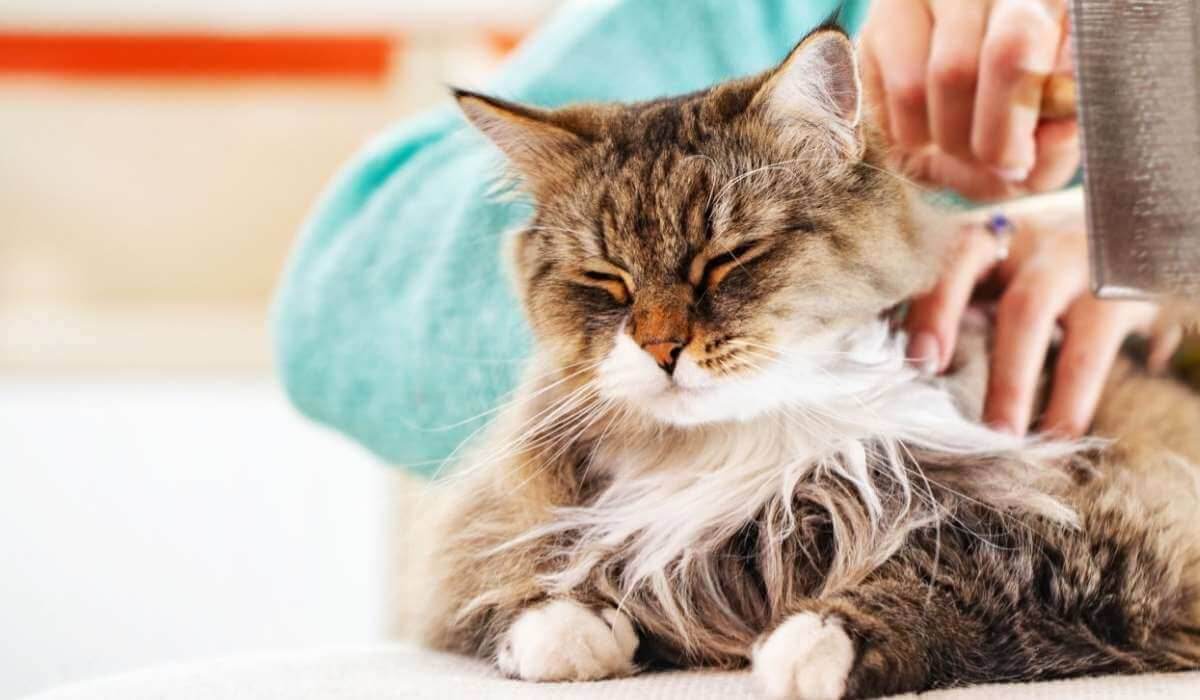Cats are excellent self-groomers, so furtunately, it’s not all that necessary for you to bathe a cat in the same way you would a dog. They can, however, do with some help when it comes to brushing, which also gives you the opportunity to do a general check for fleas, ticks, lumps, or anything out of the ordinary.
Why Brush Regularly?
Any cat pawrent will be very well acquainted with the dreaded hairball. During their extensive grooming routines, cats’ sandpaper-like tongues catch loose hairs which are swallowed and usually pass through without problems, but when the hairs get stuck in the stomach, hairballs form. So every time you brush your kitty and remove those dead hairs, you’re potentially saving them from an intestinal blockage, gagging, and/or vomiting.
Brushing can also help keep your feline friend’s coat healthy and shiny by stimulating the production and release of natural follicle oils.
Purrhaps most importantly, it means you’ll have less cat hair all over absolutely everything that you own!
Start Early and Be Patient
Neither of you want this to turn into a clawful experience so the golden rule for brushing a cat is to go slow and don’t force it; if they show signs of stress or discomfort, either pull back or stop altogether and try again later. Other tips to employ:
- Wait for kitty to be relaxed and comfortable before you come at them with the tools, and when you do, be very gentle
- Start at a small section and work your way along the body for as long as your cat will allow
- Gradually increase the amount of time you spend brushing until it becomes part of your normal routine
- Use a toothbrush for the harder-to-reach places
- Make sure to end the session with a treat or cuddle so that grooming time is associated with positive pampurring
- Ideally, long-haired cats should be brushed once a day, and short-haired cats once a week
Try Different Tools
There are several different tools for the job, but generally, wide-toothed combs are more effective on long-haired cats and fine-toothed combs are more suited to short-haired cats. Harder bristles do a better job at removing hair from the undercoat of a cat with long hair, but you may need to work your way from a soft-bristled brush to get your kitty comfortable.
For cats that seem to really dislike the brush, a grooming glove is an excellent alternative as it feels more like petting than combing, for the both of you. And we really aren’t kitten when we say that it can become a delightful bonding exercise for you and your little one.
---
Here at PETWORLD we stock all the grooming tools, products, and accessories for at-home pet grooming, plus you can bring your best friend in for a professional session at GROOMWORLD (conveniently located within most branches).
